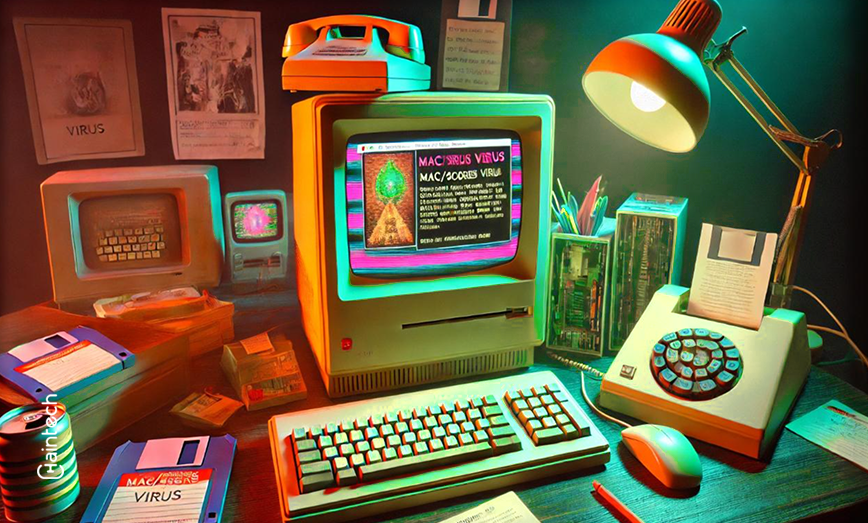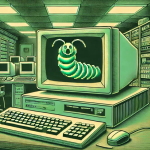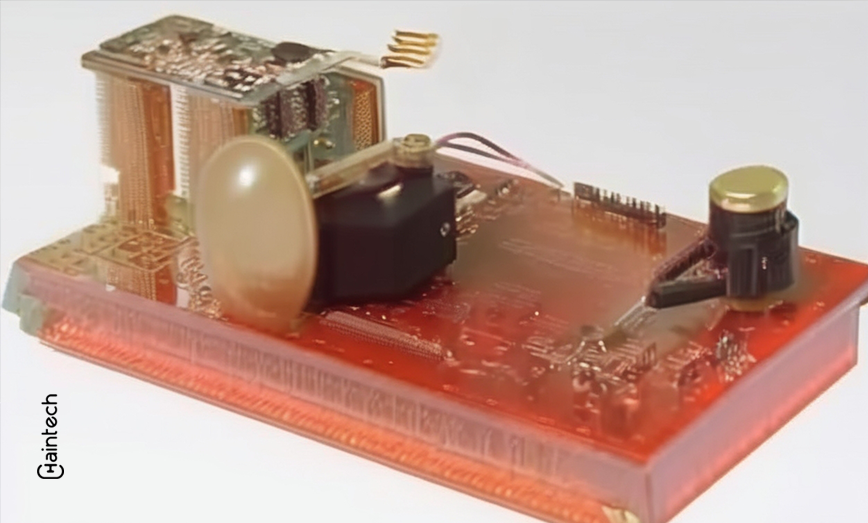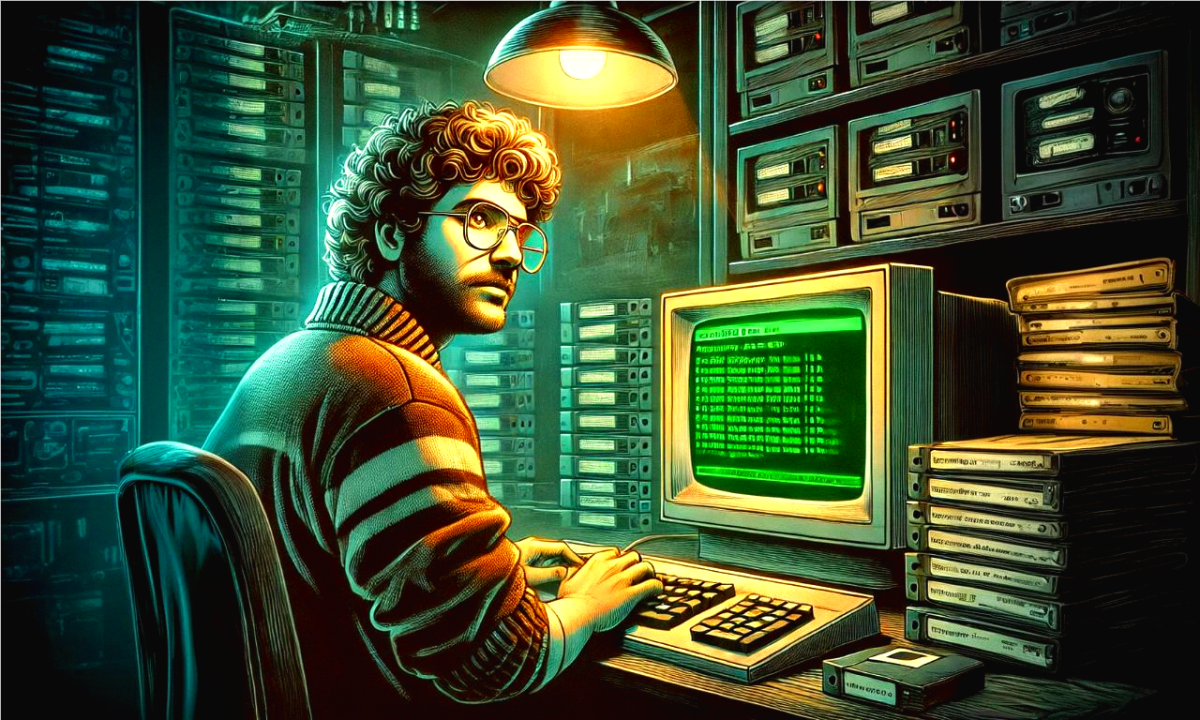Macintosh 6.0.4 Under Siege: The 1988 Virus Outbreak Chronicles

In the late 80s, when personal computers were still a novelty in many homes, Macs were seen as nearly invincible. A friend proudly owned a Macintosh 6.0.4 and believed it could do no wrong. That is, until one day, his computer started acting strangely. Files were missing, the system was crashing, and nothing made sense. After digging, he learned that a virus had hit his beloved Mac. It was the Scores virus, one of the earliest malware attacks on the Mac.
This virus was sneaky. It quietly spread through files like Scrapbook and Note Pad, which many Mac users used then. People didn’t even realize they were helping it spread by sharing files on floppy disks. If you’re curious how this virus caused such chaos and how it forever changed Mac security, keep reading to find out.
The Story of the Scores Virus: A Nightmare for Macintosh Users
1988 was a challenging year for Macintosh 6.0.4 users. The Scores virus, known by names like Eric, Vult, NASA, and San Jose Flu, hit hard. Unlike today’s malware that spreads online, this virus traveled on floppy disks. Those little disks were everywhere, especially in offices and schools where Macs were popular.
What made the Scores virus especially tricky was how it hid itself. It created an invisible ” Scores ” file that attached itself to everyday files like Scrapbooks and Notepads. People unknowingly passed it around as they shared files. It spreads like wildfire, infecting system after system and causing havoc.
At the time, Mac users had little experience with viruses. Many believed that Macintosh computers were immune to such attacks. The Scores virus shattered that myth. Systems started crashing, data disappeared, and users were left helpless. Apple’s clean, secure reputation took a hit.
How Did the Scores Virus Spread? The Attack Vector Explained
The Scores virus didn’t break into through the Internet. It spread more personally, which made it even scarier.
Here’s how the virus managed to cause so much trouble:
| Virus Behavior | Description |
| Scrapbook Infection | The virus attached to Scrapbook files, which were frequently shared. |
| Note Pad Infection | It infected Note Pad files, spreading further with these shared files. |
| System Startup Execution | The virus would execute itself during system startup. |
| Invisible “Scores” File | The virus created an invisible file called ‘Scores’ to stay hidden. |
| Spread via Floppy Disks | Floppy disks were used to share infected files between computers. |
This method of spreading was smart for its time. Floppy disks were the main way people transferred files back then. Many users unknowingly spread the virus by sharing infected disks, causing it to spread quickly from one machine to another.
What Did the Scores Virus Do? Instability and Data Loss
Once the Scores virus infected a Macintosh 6.0.4, it didn’t sit quietly. It caused real problems. The biggest issues were system instability and data corruption. Here’s what happened to users who had the misfortune of being infected:
- Data Corruption: Important system files got corrupted, causing users to lose data. Sometimes, this meant losing work, documents, or personal files that were crucial.
- System Crashes: Frequent system crashes have become common for many infected users. Their Macs would freeze or shut down without warning, leading to frustration and lost productivity.
- Reduced Productivity: Constant crashes and data loss made it difficult to get anything done. This was more than an inconvenience for office workers and students; it disrupted their entire workflow.
- Difficult Virus Removal: Removing the virus wasn’t easy. Since it was invisible, finding and deleting the “Scores” file took a lot of effort. Most users didn’t have the tools or knowledge to handle it.
The Scores virus highlighted how vulnerable even Macintosh systems were at the time. This was a wake-up call for users who thought their computers were invincible.
The Impact of the Scores Virus on Apple’s Reputation
Before 1988, Macs had a solid reputation for being secure. People believed Macs didn’t get viruses. The Scores virus shattered that belief. For the first time, Mac users confronted this situation in the same manner as PC users had for years. It was not only a technical challenge; it damaged Apple’s reputation quite badly.
Users always believed that their Macs were safe, and so was their trust until the system crashed and data was lost due to bugs and unpredictable behavior. When people bought Macintosh computers, that wasn’t what they had signed up for. Something had to be done by Apple to win the faith and trust of people once again, and they are addressing the issue of making their systems safe.
As a result of the Scores virus, Apple shifted its focus. They started taking malware and security more seriously. The incident pushed them to develop better security protocols and tools to ensure their systems would be more resistant to future attacks.
How Mac Users Tried to Fight the Scores Virus
In 1988, Mac users didn’t have many tools to fight viruses. Antivirus programs were rare, and most people had never heard of malware until the Scores virus came along. Here’s what people did to try to fight the infection:
Usually, the first step was physically separating the compromised machines to stop them from contaminating other computers with the floppy disks.
Eventually, it dawned on computer users that there was some kind of an unobtrusive file that was to blame for the mess and instructed them to get rid of the “Scores” file. This was not easy and often required an expert to do it.
Some virus detectors were produced, but those were quite limited to some extent and were used solely to identify and ultimately destroy the infected files. Such software was, however, slow in operation and had a low success rate, as it would always check and remove even readily available programs for infectious disease.
Let’s clarify first that things have improved a lot today. Apple Computer’s operating system now has a built-in security system consisting of XProtect, Gatekeeper, and Notarization. These techniques help ensure no virus ever infiltrates your computer system. But in 1988, users were largely on their own.
How the Scores Virus Changed Apple’s Approach to Security
The Scores virus wasn’t just a technical problem but a turning point for Apple. The virus revealed that Macintosh systems were as vulnerable as PCs, and Apple had to respond quickly to maintain its reputation.
Here are some key changes Apple made after the Scores virus:
- Antivirus Software Became Important: Following the virus, antivirus software became more popular among Mac users. One of the early antivirus programs was Disinfectant, a free tool that helped users detect and remove viruses. It wasn’t perfect, but it was a start.
- Improved System Security: Apple prioritized security in later versions of its operating systems. They introduced stronger protections and worked on developing systems that could detect and block potential threats.
- User Awareness: The virus taught users to be more careful about sharing files. People started to realize they needed to think about security, even on a Mac.
These changes helped make Macintosh computers more secure, and over time, Apple built a much stronger defense against malware.
Lessons Learned from the Scores Virus
Viral infection has been historically recorded and now hibernates although lessons from the Scores virus still hold relevance even today. Were there in 1988, modern Macs are safer today, useless since no system is foolproof in preventing malware.
Here’s what we can still remember about the Scores virus:
- Keep Software Updated: Always try as much to install the latest version of macOS to all devices. Periodical maintenance brings new enhancements, including safety modifications to help the computer against unknown threats.
- Download Software from Trusted Sources Only: It is also worth noting that applications are downloaded only from trustworthy developers or the App Store. Do not install unknown downloads from the internet, as they can harm the device.
- Backup Your Data: Be it in any format, it is very important that there be a copy of critical data at all times. This way, if your system gets infected, of course, the machine can still access your files very fast and easily.
- Use Built-In Security Tools: Most of this security is already built into the new versions of macOS – XProtect and Gatekeeper as well as the new feature Notarization. All of these should be turned on to help secure a Mac.
- Stay Aware of New Threats: Cyber threats are growing newer every day. For this reason, taking the initiative to keep in touch with the most current security risks will assist in evading them.
- Consider Using Antivirus Software: Although the situation with Mac computers has improved significantly, an antivirus may still be advisable.
The Scores Virus and the Evolution of Mac Security
The 1988 incident known as The Scores virus marked an important turning point in the history of Macintosh computers. It demonstrated that no system is impregnable and compelled Apple to reassess its approach to security issues. Whereas the virus was destructive to systems, it was rather beneficial to computer users in that it led to more secure systems than what was previously available to Mac users.
The lessons from 1988 are still relevant. The Mac scan update system is regularly updated, downloaded files are treated cautiously, and alertness is maintained to expect any attack. Cybersecurity is not a one-off event; it is still a continuous process, and your best chance of keeping your system safe is to make sure that you are always on the lookout.









